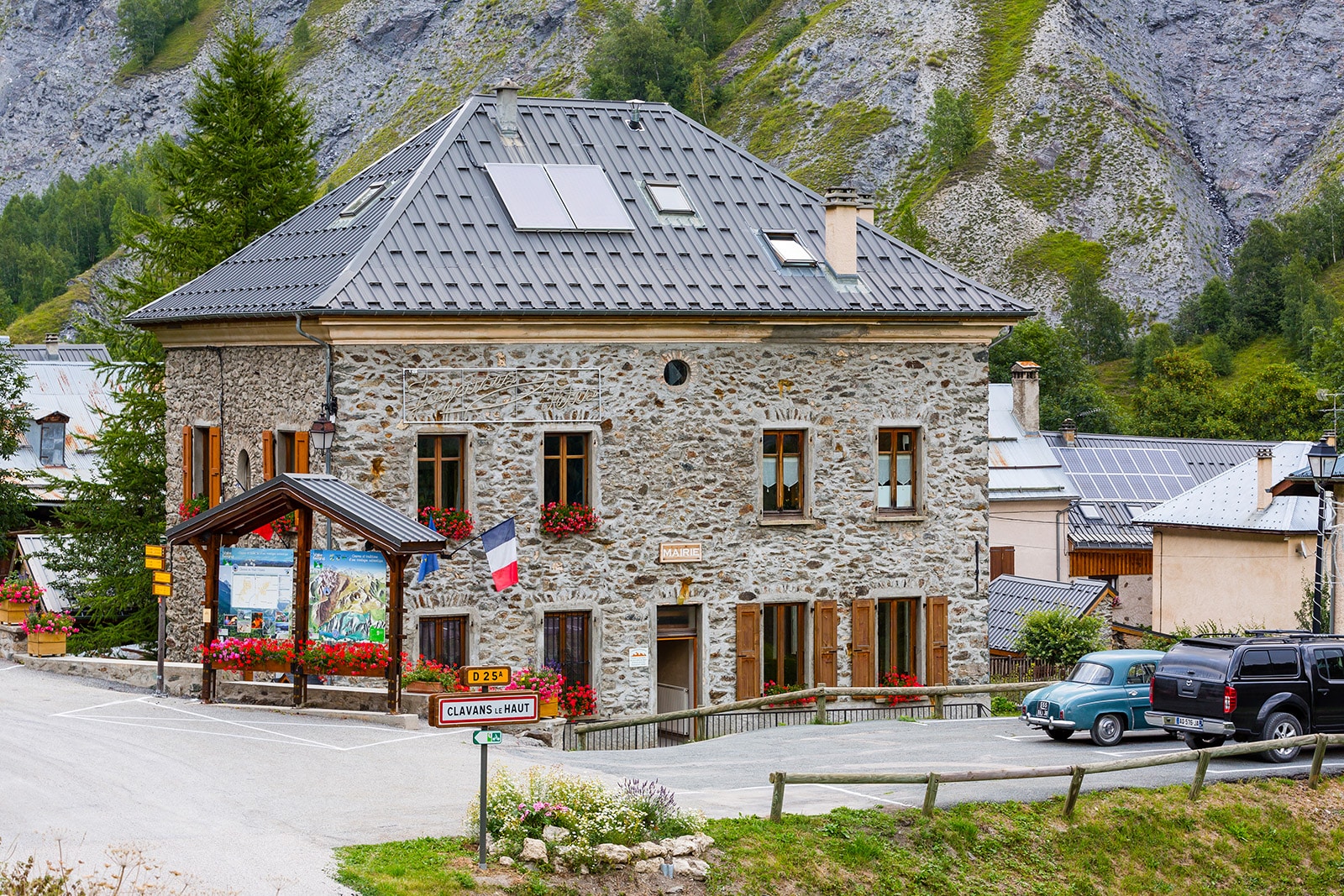A village in bloom on the banks of the Ferrand, a torrent that rises from the Sarenne glacier, Clavans en Haut Oisans seduces visitors with its ancient houses, testimony to a prosperous past, and the charm of its small squares with flowing fountains. In addition to its traditional character, this small commune in the Oisans region recounts a piece of the history of the Alps and the Wars of Religion, as hundreds of Protestants attempted to flee to Savoie when the Edict of Nantes was revoked.
The village of Clavans-en-Haut-Oisans lies at the foot of the Grandes Rousses massif at an altitude of around 1,400 meters. This small town has everything to seduce, with its flower-filled mountain pastures, typical sheepfolds, beautiful fountains and typical church, set amidst some of the most beautiful lakes and mountain ranges in the Isère department. It’s made up of two charming hamlets, Clavans-le-Haut and Clavans-le-Bas, located just two kilometers apart, between Mont Cassini, Les Grandes Rousses and Le Ferrand. Ideal for a wide range of activities, including winter sports and high-mountain hiking, with the Deux Alpes and Mont de Lans ski resorts nearby, it’s one of the top destinations for vacation rentals in the Auvergne Rhône Alpes region.

The historical and cultural heritageof Clavans-en-Haut-Oisans
Traditions and culture
Clavans-en-Haut-Oisans was once an important customs village on the ancient border between Savoie and its high-altitude passes. These roads were used by peddlers to sell a variety of goods, including haberdashery, trinkets and alpine plants. These products were sold all over France and even as far away as Russia.
The business of these peddlers could not have been more lucrative, as evidenced by the beautiful homes of the time. Some of these houses served as refuges for Huguenots at the height of the French War of Religion. The revocation of the Edict of Nantes prompted hundreds of Protestants to flee to Savoy.
The traditions of that era are still alive today. They are still tangible in the crafts (basketry, farouilles, honey production) and culinary arts.

The surrounding areaof Clavans-en-Haut-Oisans
There are many ways to explore the landscapes surrounding the village of Clavans-en-Haut-Oisans. Some visitors can’t resist tackling Sarenne, the world’s longest black run, with its more technical difficulty and vertiginous slopes. You’ll find it in the Alpe d’Huez ski area, one of the region’s most beautiful resorts, where skiers can take advantage of numerous lifts and a wide range of outdoor activities to enjoy during the vacations. Ski runs aside, this pass is also a wild balcony from which to contemplate the peaks of the surrounding mountains, such as La Meije, a mountain in the Oisans basin on the north-western edge of the Écrins massif.
This is where hikers go, especially in summer, to get to the Cassini summit in the middle of nowhere. Some of these hikers started their trek from Alpe d’Huez or passed through the Ferrand valley. In the 18th century, César-François Cassini was entrusted with the mission of mapping the kingdom of France. The geodesist left his name to several passes, including the Croix de Cassini, which he used for his measurements. Cassini’s maps were drawn over two centuries ago, but they are just as accurate as modern IGN maps.
Visitors can in any case take other trails. Some, for example, ski down the Grand Sablat glacier in winter from the Pic Blanc, the highest point in Alpe d’Huez. La montée du Cerisier and Clos Chevallet are also not-to-be-missed itineraries, particularly for summer hikes to discover the local flora and fauna.
Nearby villages include Oz en Oisans and Saint Christophe en Oisans.


